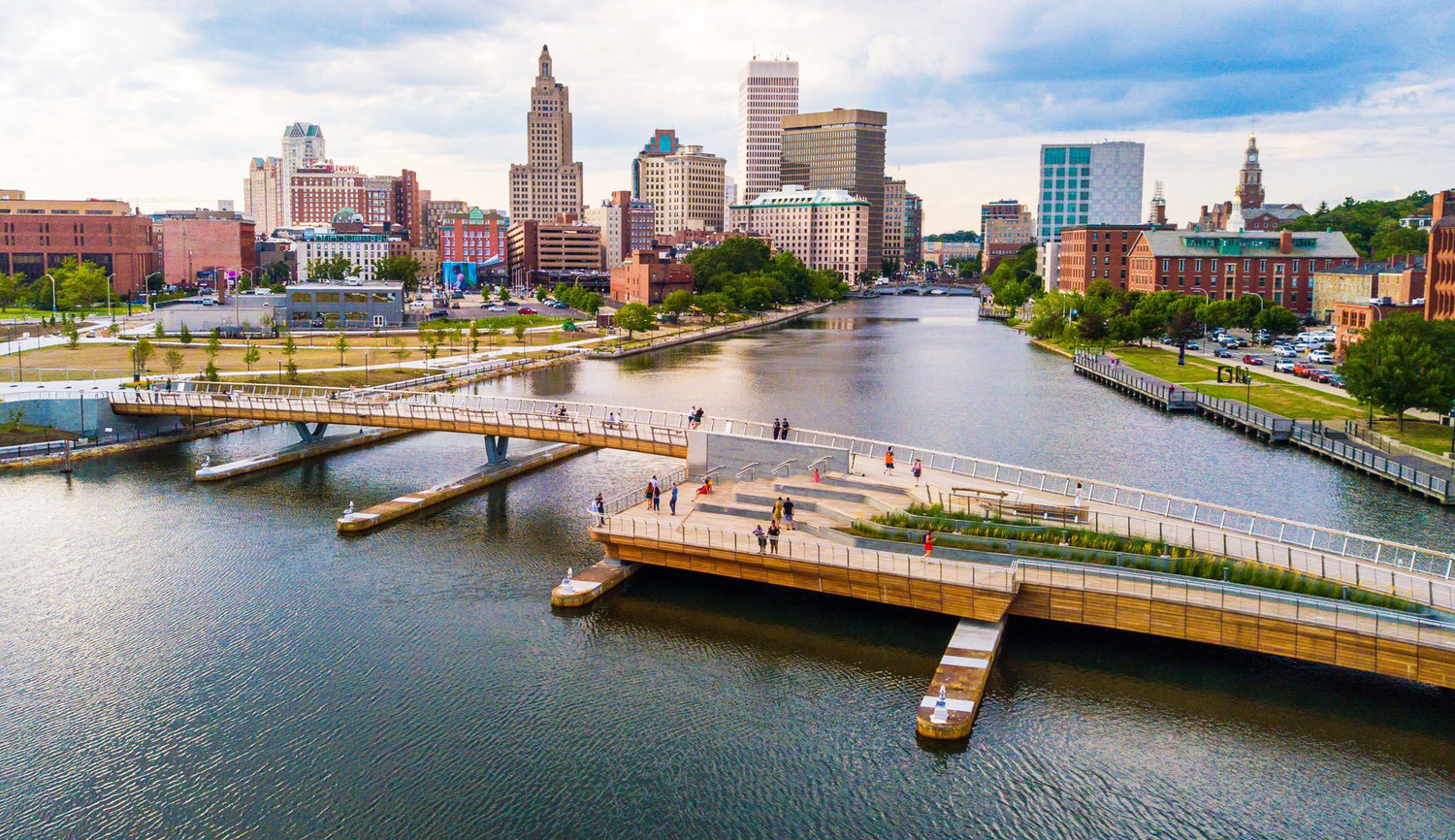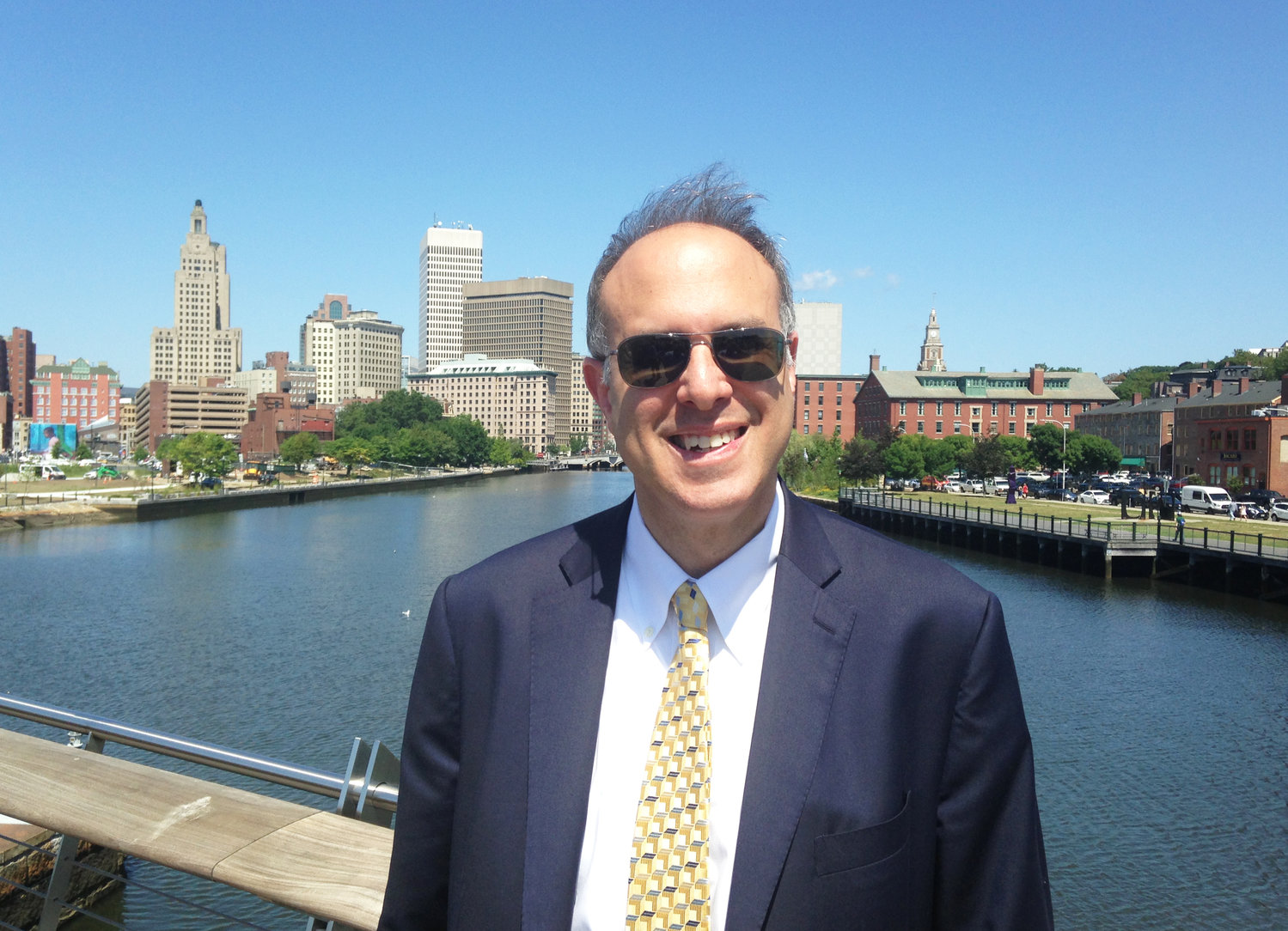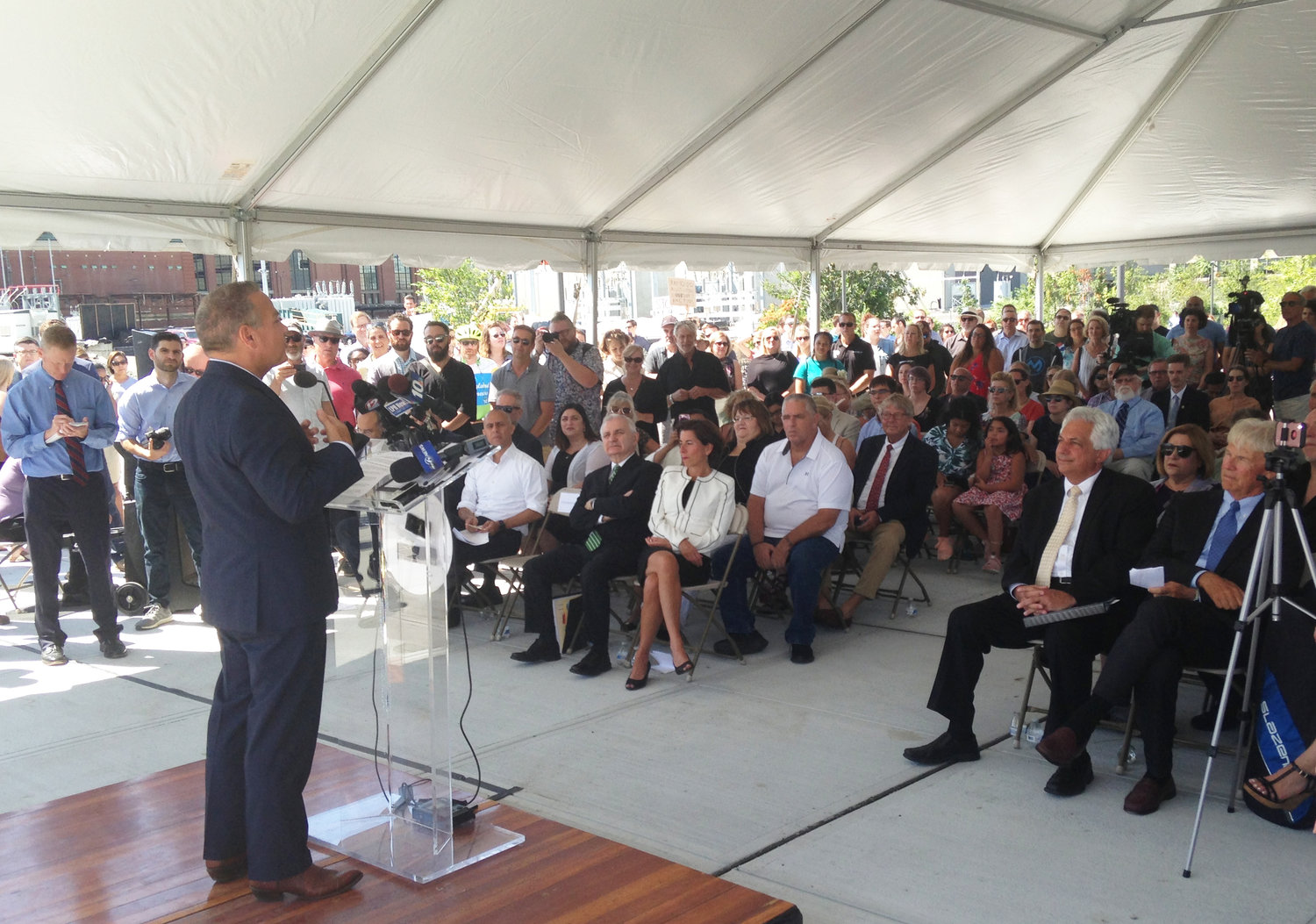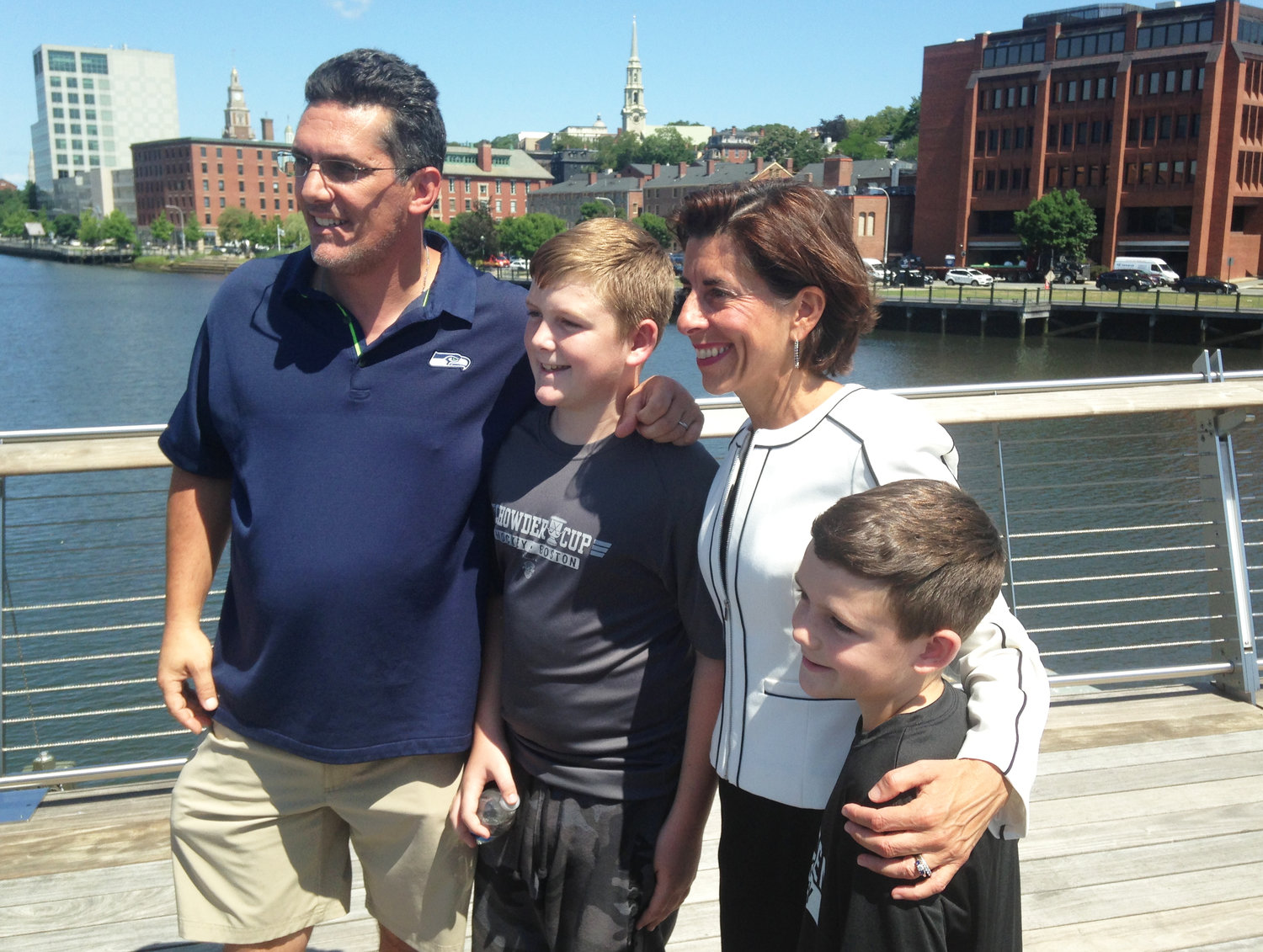To build an inclusive bridge into the future, honor the past
Erecting a bench in the parkland next to the new pedestrian bridge across the Providence River, as part of the “Bench by the Road” project by the Toni Morrison Society, would be a restorative act to honor the legacy of slaves and their descendants in the history of Providence
The only true color is that of our blood, which is red, and no one’s blood is redder than anyone else’s.
PROVIDENCE – Everyone was smiling. There were few discouraging words to be heard under a bright blue cloudless summer morning sky. [A few protesters on bicycles holding signs, worried about plans to scoop out transportation funds that had been earmarked for pedestrian traffic infrastructure, were in attendance.]
In his turn at the podium, Peter Alviti, the director of the R.I. Department of Transportation, called the pedestrian bridge the beginning of a new chapter in Rhode Island’s history. The bridge, he said, will function “to provide a connection between the east side and the west side of the river and a public space that doesn’t just bridge the two sides of a river but a beautiful space that will provide a magnificent view of our beautiful city for countless years to countless people,” as reported by WPRI.
Once the speechifying was done and the ceremonial ribbon cut, hundreds of pedestrians streamed across the new $22 million span, where two decades earlier, cars and trucks had once sped across the river. Everyone was ebullient; Gov. Gina Raimondo posed for photos from the bridge, as did CommerceRI Secretary Stefan Pryor. [See images above.]
A missing part of the narrative
Something important was missing, ConvergenceRI realized. Something had been left out of the celebration held on Friday morning, Aug. 9, heralding the completion of the pedestrian bridge over the Providence River, connecting the new Innovation & Design District of the city with the Fox Point and India Point neighborhoods, with the expressed hope and desire to connect Rhode Island’s past to the future.
For all the stories told by dignitaries and politicians about the long journey that had taken place to complete the bridge – from conception to international design competition, from fierce advocacy by some groups such as the Jewelry District Association and the Providence Foundation to the championing of the project by Rhode Island’s congressional delegation in order to keep the resources flowing, from the leadership of government agencies such as CommerceRI and the R.I. Department of Transportation to the guidance provided by the 195 District Commission, all duly mentioned at the speaker’s podium, there was huge gap: call it an omission from the narrative.
The missing part of the story: the legacy of the role that slavery and slave ships in the triangular trade that had shaped the early prosperity of Providence and Rhode Island, and the lack of a place – “even a bench by the roadside,” to recognize and acknowledge those contributions as a restorative act, one that promotes convergence, conversation and community.
Correcting the problem for that missing part of the narrative could be easily remedied: create a bench in the parkland adjacent to the pedestrian bridge, as part of an ongoing initiative being led by the Toni Morrison Society, as a way of honoring those who had been slaves and their descendants, and those who had traveled through Providence on the “underground railroad” toward freedom.
An idea whose time may have finally come
The name “Bench by the Road” is taken from Morrison’s remarks in a 1989 interview with World Magazine, during which she spoke of the absences of historical markers that help remember the lives of Africans who were enslaved, and of how her fifth novel, Beloved, served in this symbolic role, according to the Toni Morrison Society.
“There is no place you or I can go, to think about or not think about, to summon the presences of, or recollect the absences of slaves,” Morrison said. “There is no suitable memorial, or plaque, or wreath, or wall, or park, or skyscraper lobby. There’s no 300-foot tower, there’s no small bench by the road. There is not even a tree scored, an initial that I can visit or you can visit in Charleston or Savannah or New York or Providence or better still on the banks of the Mississippi.” And because such a place did not exist, Morrison continued, her book, Beloved, had been written to serve in that capacity.
The goal of the “Bench by the Road” project, the Toni Morrison Society explained, is to address the lament that Toni Morrison expressed in her interview by placing benches and plaques at sites commemorating significant moments, individuals, and locations within the history of the African Diaspora.
Since 2006, the Toni Morrison Society has placed some 20 benches at sites around the world. But one place that is still lacking such a bench is Providence, even though the city was mentioned in Morrison’s initial lament.
And, the area being connected by the new pedestrian bridge is rich with historical significance in the legacy of the slave trade in America and in Rhode Island, because the mouth of the Providence River and its wharves served as the destination point of the economic fruits of such commerce known as the triangular trade – slaves, sugar and rum.
The question that needs to be asked
Last week, on Wednesday, Aug.7, ConvergenceRI put out a breaking news edition in honor of Toni Morrison’s death at the age of 88, republishing an interview ConvergenceRI had conducted with Toni Morrison in November of 1976. [See link below to ConvergenceRI story: “An interview with Toni Morrison from 1976.”
ConvergenceRI had, in one of the three sidebars which accompany every story in the newsletter, “The questions that need to be asked,” posed the question: “With the opening of the new pedestrian bridge across the Providence River on Friday, Aug. 9, will the city of Providence consider placing a bench in the new park honoring both Toni Morrison and the Underground Railroad?”
Sometimes, when you ask a question, you need to try and find out the answers.
What would it take to erect such a bench and how much would it cost? ConvergenceRI reached out to the Toni Morrison Society to learn more about the details. A six-foot bench would cost around $5,000; a proposal would have to through an application process and the historical connection of the site chosen would have to be verified. Neither seemed like a difficult obstacle to overcome. The Toni Morrison Society expressed encouragement, given that Providence had been mentioned in the original Morrison quote, and that there was a strong historical linkages to slave trading, the triangle trade, and to the underground railroad in Providence.
What would it take to get permission and approval for such a bench to be erected on the new parkland on the western side of the pedestrian bridge? ConvergenceRI reached out to the 195 District Commission about what the process would entail. Because it was new territory, so to speak, without any legal precedent, the process would take some time to reach a conclusion, ConvergenceRI was told.
What was the best way to create community champions to push for such a bench? At the ceremony marking the official opening of the pedestrian bridge, ConvergenceRI approached a number of elected officials, business leaders and top state agency leaders to ask if they would be supportive of such an effort.
The answers were resoundingly positive. Congressman David Cicilline gave it his total endorsement. Sen. Jack Reed called the idea “thought provoking in a positive way in regard to Rhode Island’s history,” and said he would need more details. Maria Tocco of Providence Flea said she would be helpful in any way she could.
Carlos Machado, the division administrator for the Rhode Island Division of the Federal Highway Administration of the U.S. Department of Transportation, said that he liked the idea and that the bench seemed to be an appropriate installation for the new parkland.
Others said, off the record, that they liked the idea, but to please send them the details. Everyone said that they were intrigued and supportive of the concept.
Fleshing out the idea
Here is the current thinking by ConvergenceRI about installing a “Bench by the Road” in Providence.
• It would be a private project, not dependent on direct government funding, as a way to preserve the independence of the effort.
• It would be funded through private contributions; $5,000 does not seem like a difficult amount of money to raise.
• The bench project would be independent of any academic institution, so it would not be owned or controlled or shaped by any college or university, once again, to preserve the independence of the project. However, historical research from numerous sources would be important to create a transparent, public database to support the significance of the bench’s location in Providence.
• For the moment, ConvergenceRI is volunteering to serve as the lead organizer, similar to the work done by ConvergenceRI in organizing previous events held around toxic stress in 2015, around the deaths of despair in 2017, and around community ownership of media in 2014.
• It will probably require setting up a separate corporate structure; ConvergenceRI has already begun the conversation to obtain pro bono legal services to do so.
If not now, when?
To some, it may seem quixotic for ConvergenceRI to take on such a task. To others, it may seem out of place for a digital news platform covering the convergence of health, science, innovation, technology, research and community to become involved in such an effort.
Translated, the nay-sayers may say, stay in your silo. But what if you don’t believe in silos?
If my role as a reporter, editor and investigative journalist is to ask good questions and to pursue uncovering the answers, I believe the task fits well within the purview the vision of ConvergenceRI.
The ask
What is needed now is to be able to demonstrate the validity of building a “bench” in the parkland adjacent to the new pedestrian bridge across the Providence River as a contemplative spot for conversation and convergence by the community to honor the legacy of former slaves, their descendants here in Providence – and as a memorial to the indelible words that Toni Morrison left with us to discover the contradictions and complexities of our own lives. Storytelling is a human endeavor, and our stories are perhaps our most valuable personal possessions. Creating such a bench would honor and testify to that legacy, to inclusion of a narrative too often left out the story.
This is at the beginning of the conversation. So, please send me your thoughts and suggestions, your ideas, your stories, identifying your willingness to lend support for this project. Also, please do not send any contributions of money at this time. What will be required to push this initiative to completion will be the ability to create a powerful groundswell of community support. Thank you.










